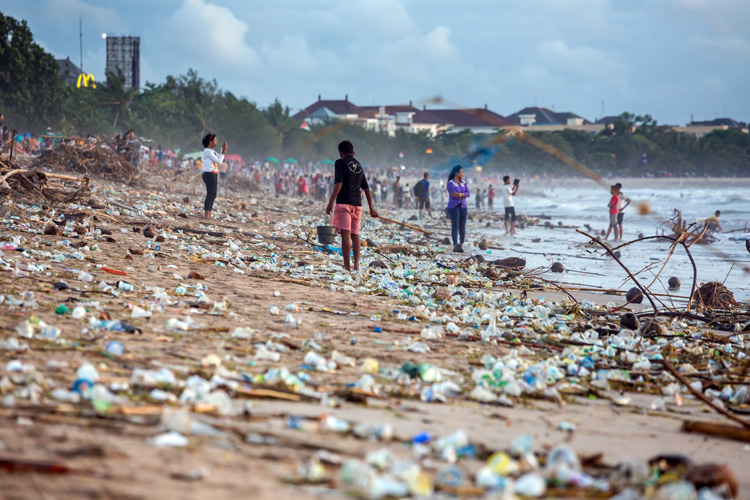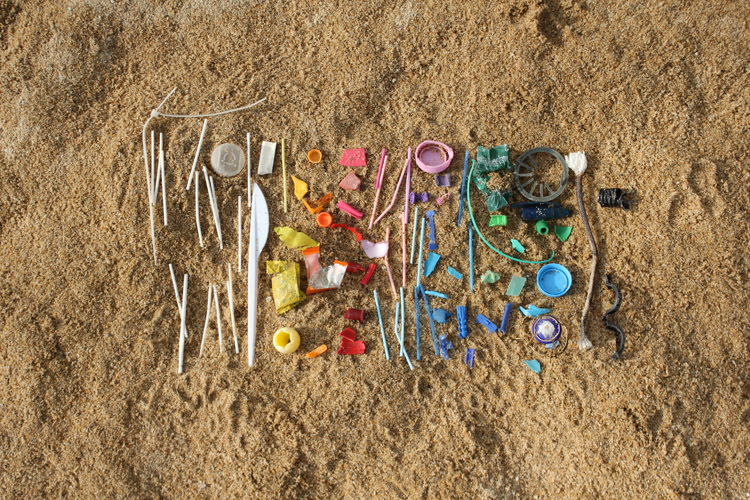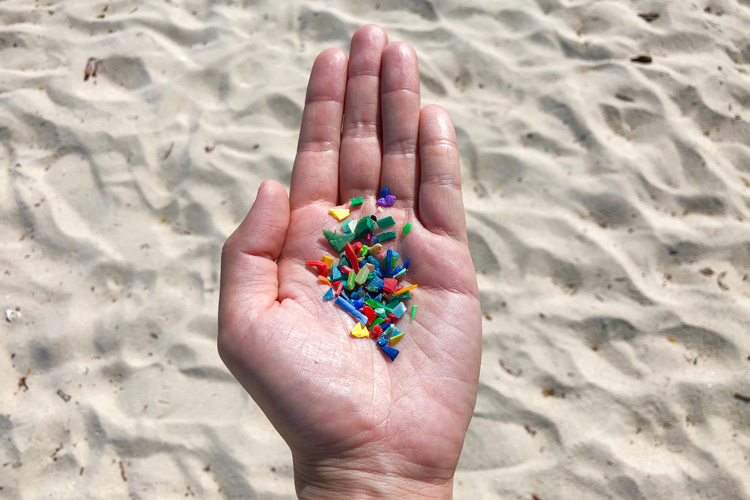Plastic is the most common type of marine debris found in the world's oceans.
Samples of several types of human-made polymers have been found in the Challenger Deep, the deepest point known on planet Earth.
Microplastics are small pieces of plastic that have been steadily invading and polluting the oceans, beaches, and the environment in general.
Microplastics are less than five millimeters long and appear in all sizes, shapes, and colors. They can be as small as the width of a human hair.
They are the result of the degradation of larger plastic items like bottles, bags, food containers, straws, and fishing gear over time.
As the tides, wind, sunlight, and the crashing of waves break them down, they become smaller and quickly hide within the environment.
Contrary to popular belief, they're not just an ocean surface problem - you can easily spot and collect them at depth.

Microbeads: A Nearly Invisible Death Threat
But microplastics can also be specifically manufactured to be small. They are called microbeads.
Plastic microbeads are traditionally smaller than two millimeters and are made of polyethylene (PE), polypropylene (PP), polyethylene terephthalate (PET), polymethyl methacrylate (PMMA), or nylon.
They are often used in personal care and beauty products and represent some of the most common examples found in natural ecosystems.
Toothpaste, body washes, shampoo, glittery make-up, face soaps, nail polish, body scrubs, exfoliating face washes, and shower gel are some of the products that may include these ultra-small solid particles.
All these tiny and apparently inoffensive pieces of plastic are a massive threat to marine life. Sea creatures tend to confuse them with food, which, sooner or later, leads to an early death.
Over 300 species of wildlife have already ingested microplastics.
Microplastics have been considered a global threat to the planet's health because they're actually trash that we can't see.

A Small Big Problem
Miniature plastic particles are difficult to spot and to remove, for example, from the beach. They can quickly enter the food chain and end up inside our stomachs.
According to a recent study by Australia's University of Newcastle, humans are now ingesting approximately 20 grams of microplastic every month or five grams per week.
Because they're small, light, and sometimes nearly invisible, some types of microplastics can remain airborne or travel fast through the air.
Synthetic textiles and household dust are the most important sources of airborne microplastics.
Scientists believe that 85 percent of the plastic found in the environment is tiny bits of microplastic, making them more dangerous than big chunks of plastic.
And because they're so small, they will not get filtered out in water treatment systems, meaning they're channeled straight into the ocean.
